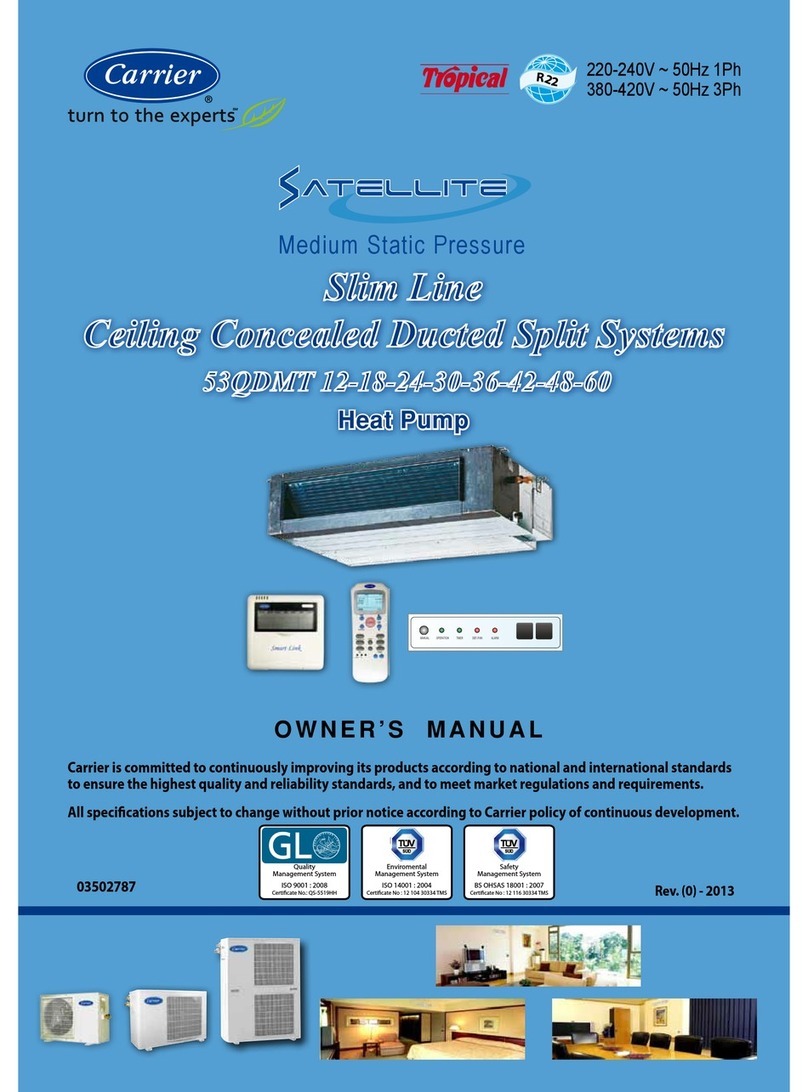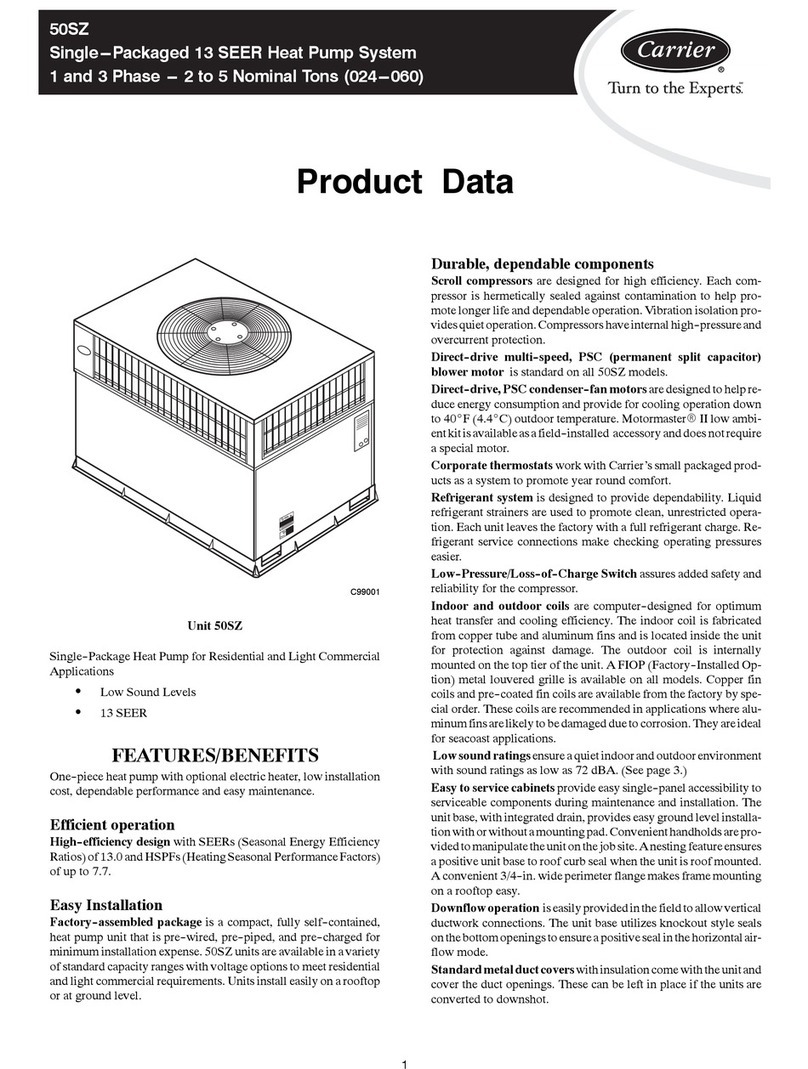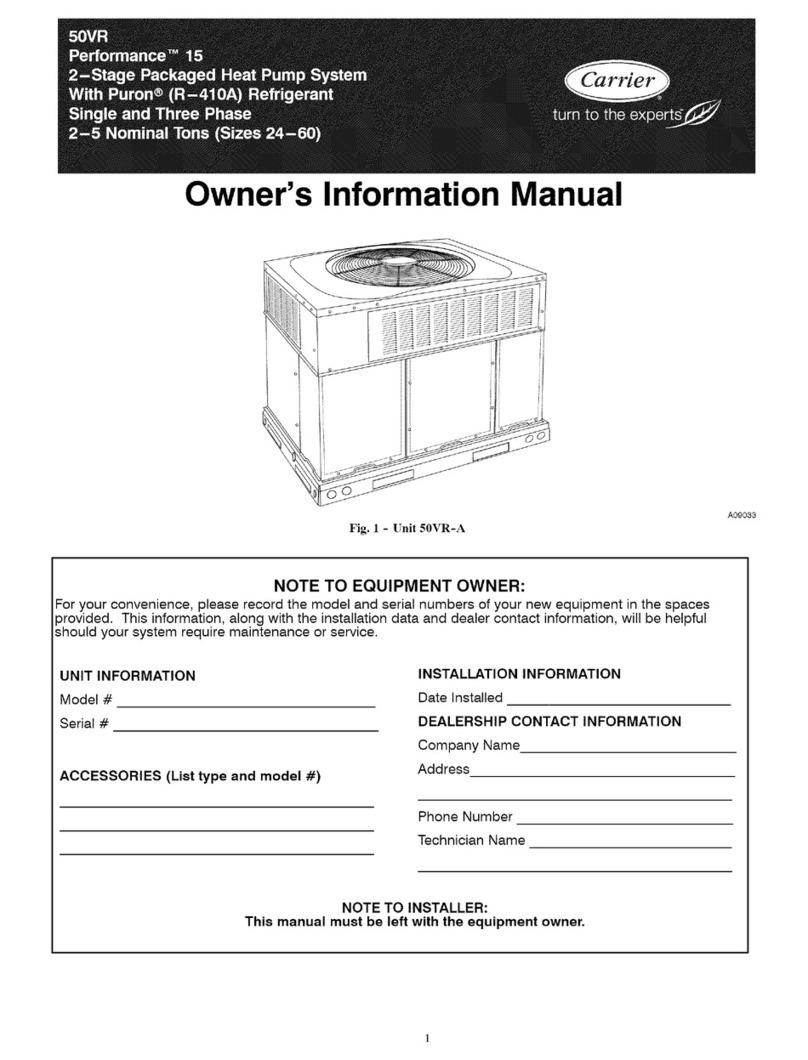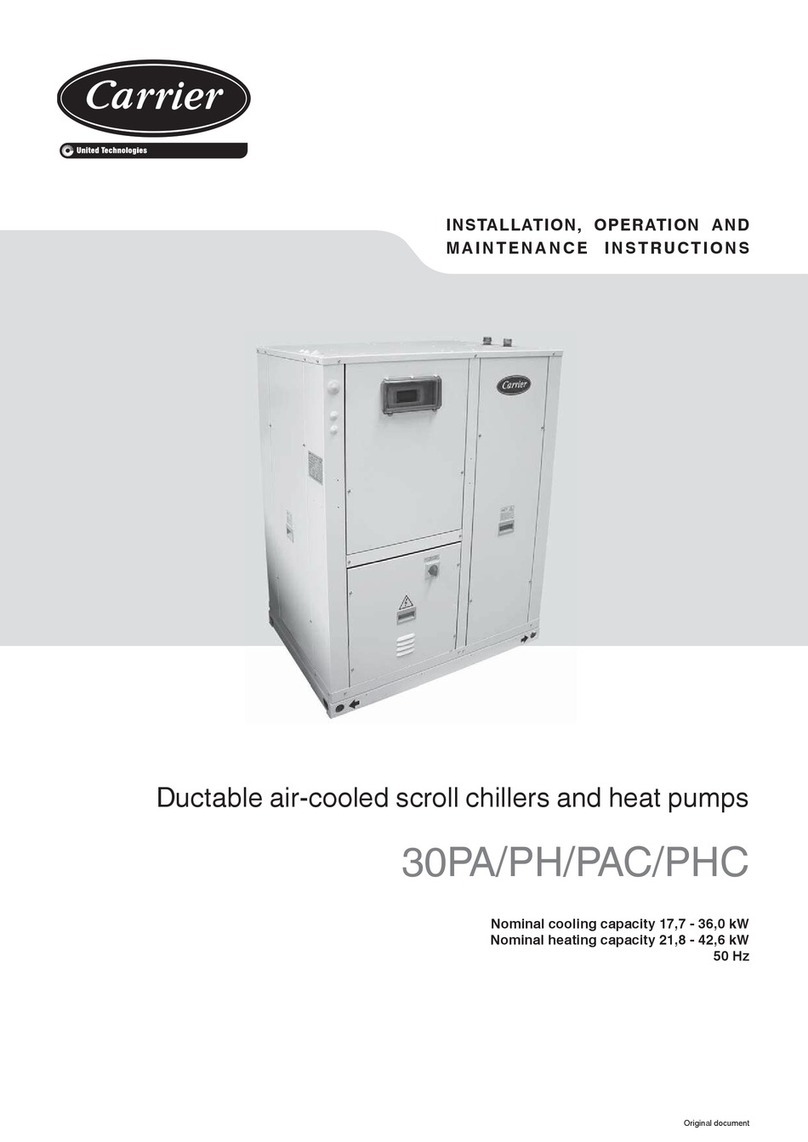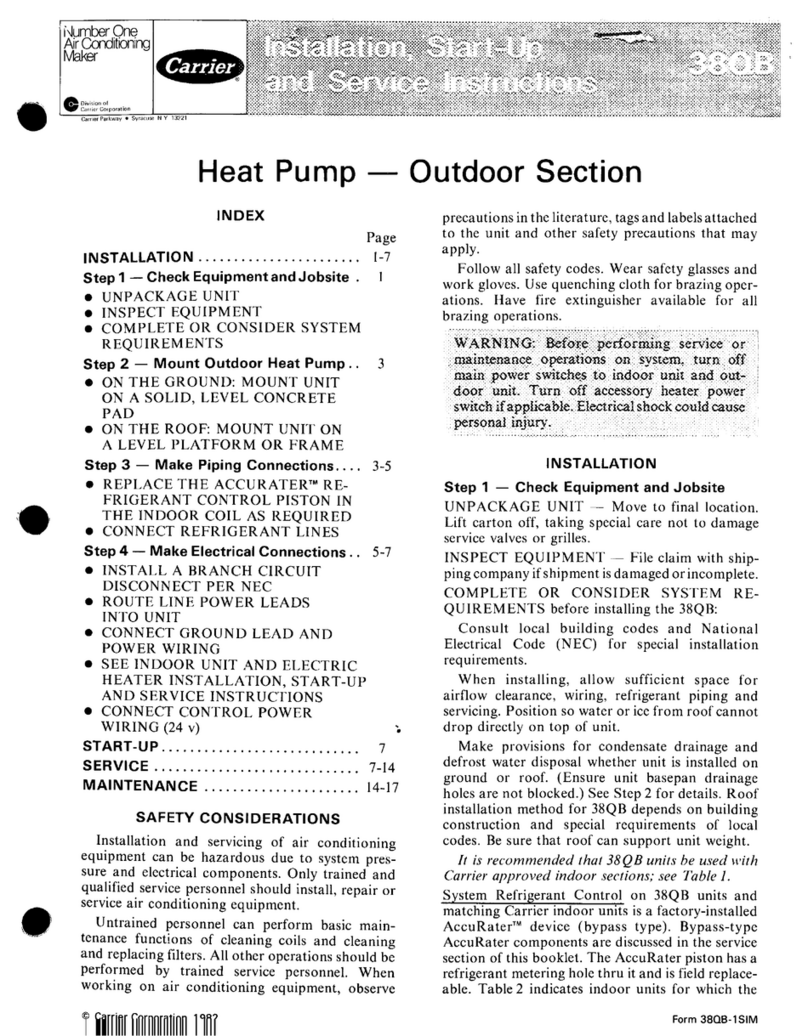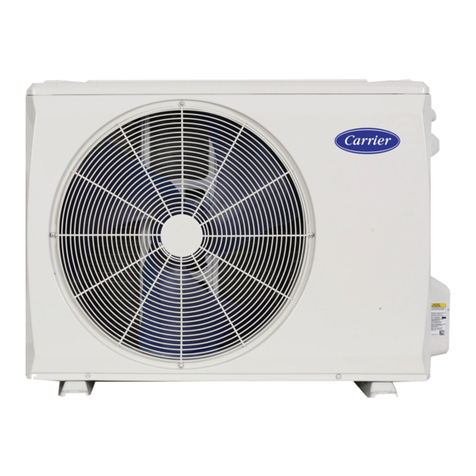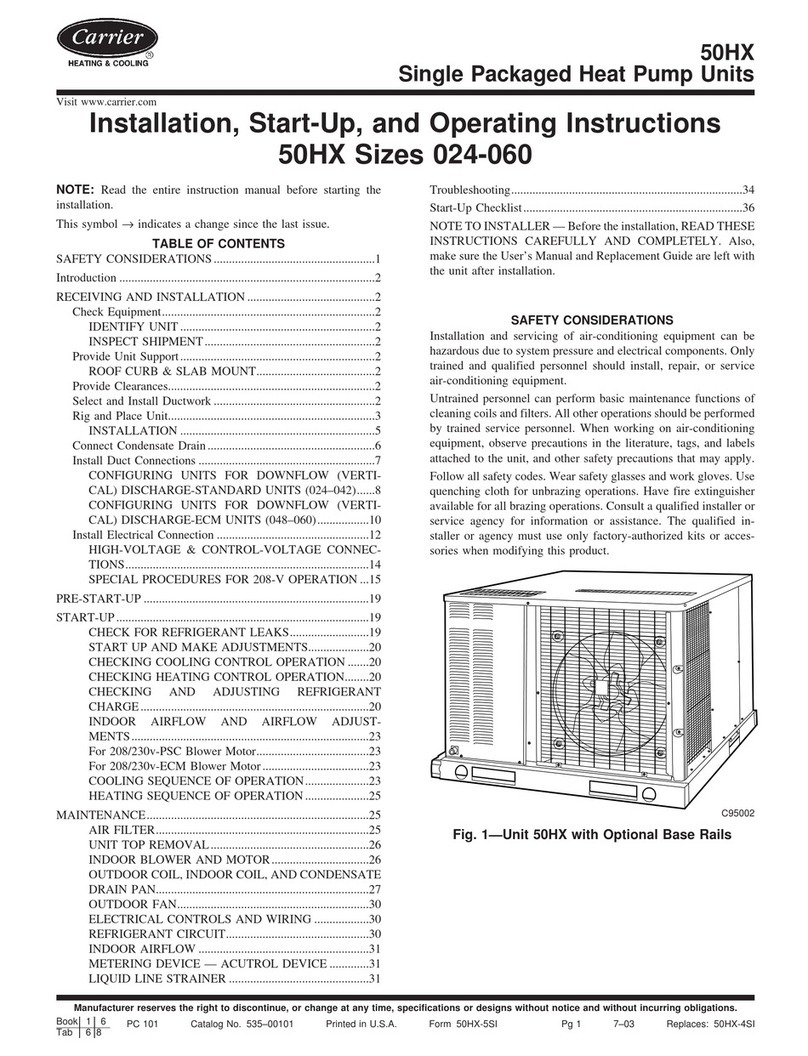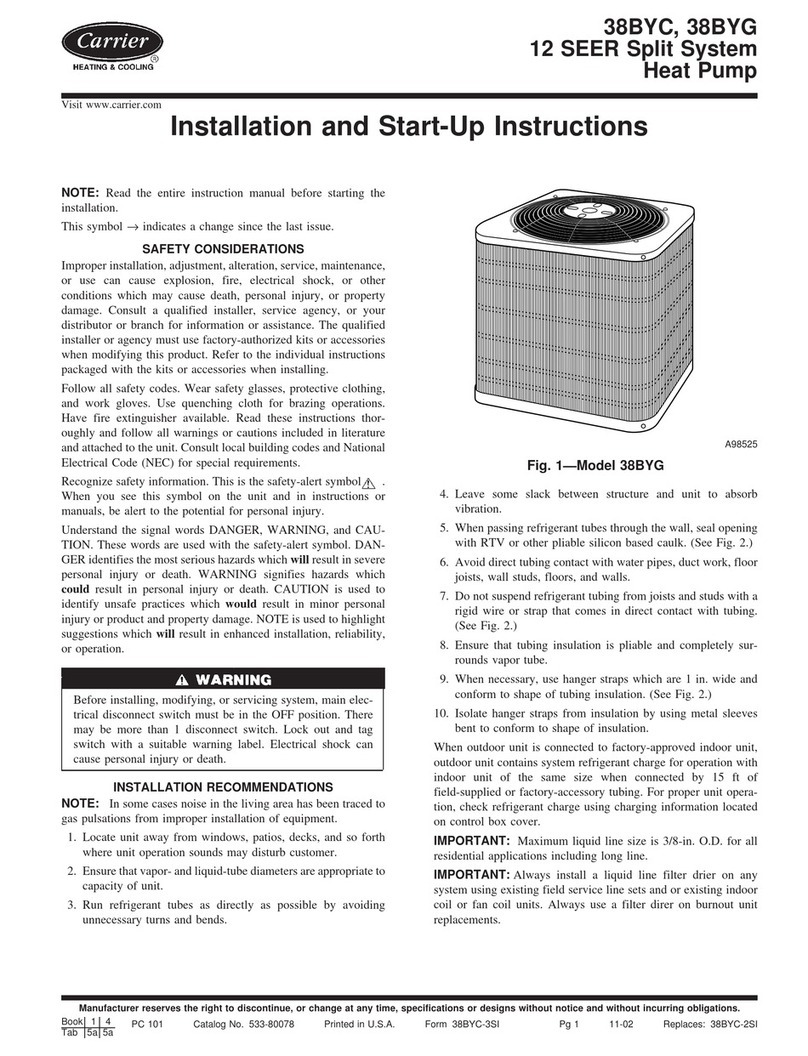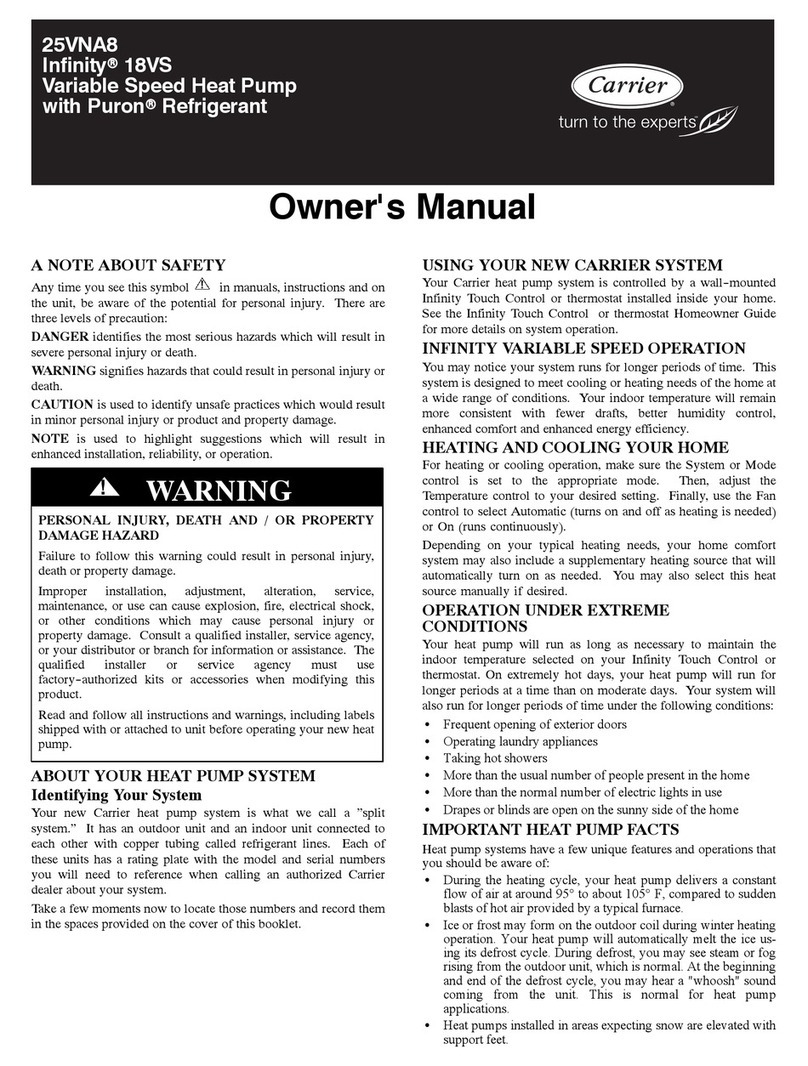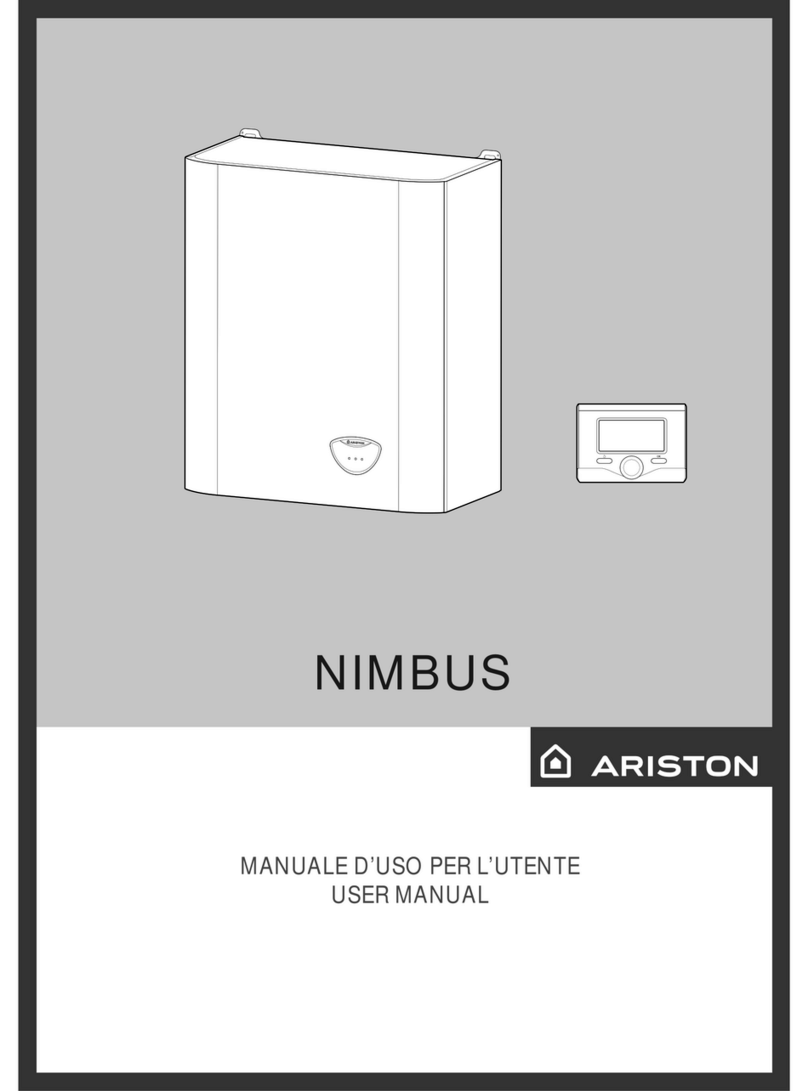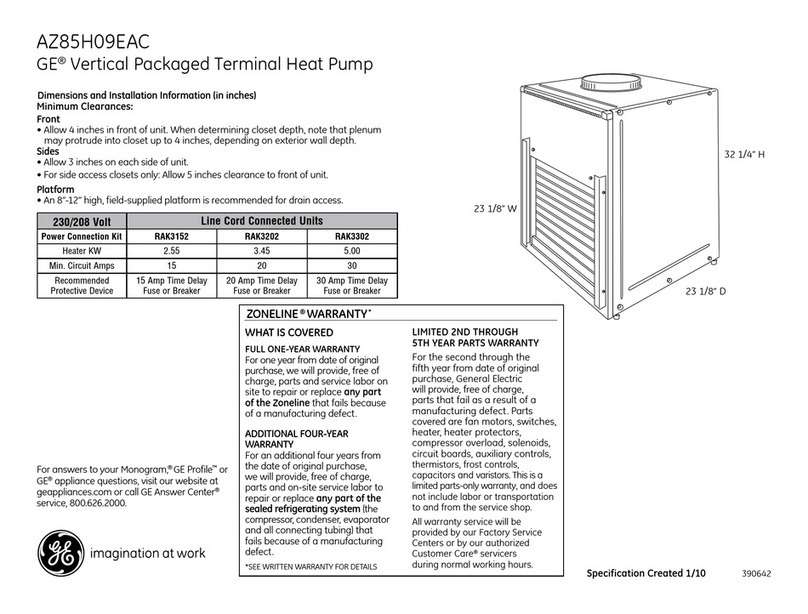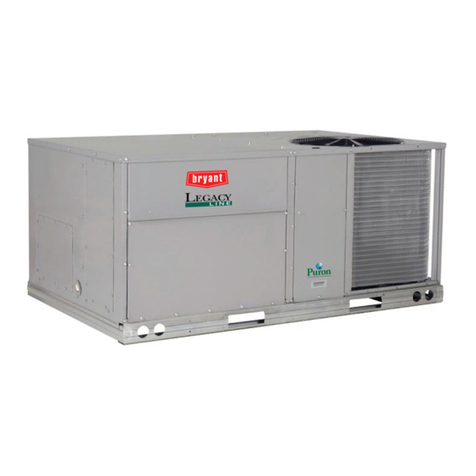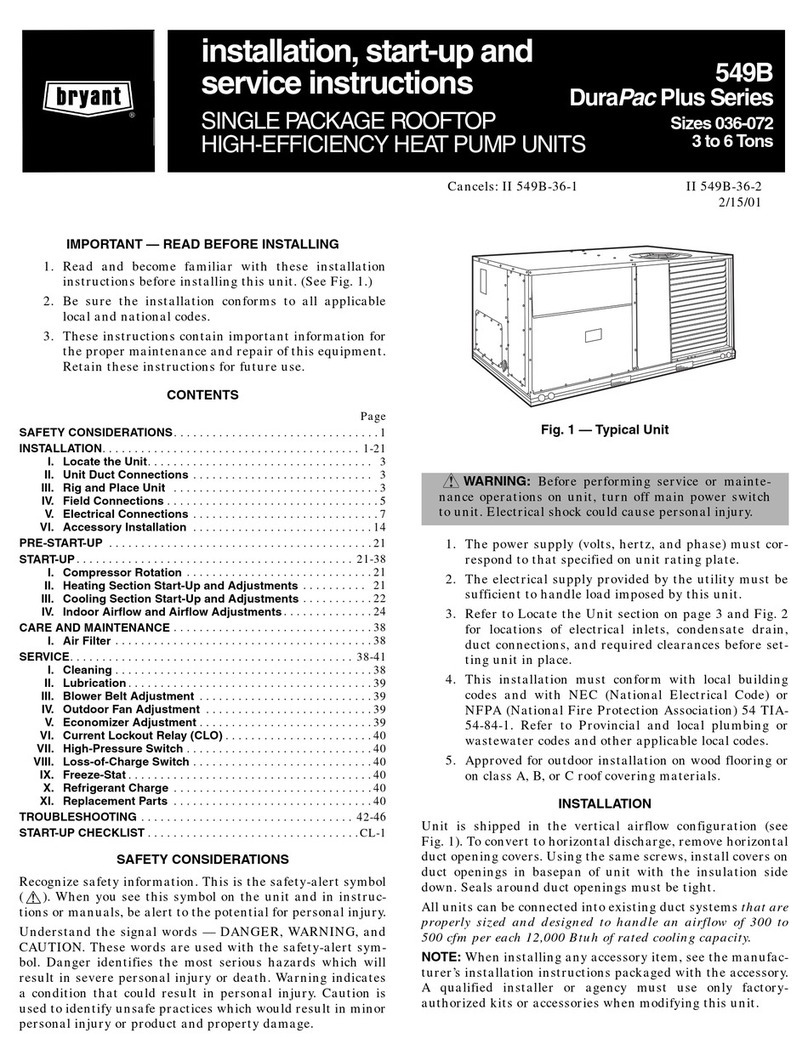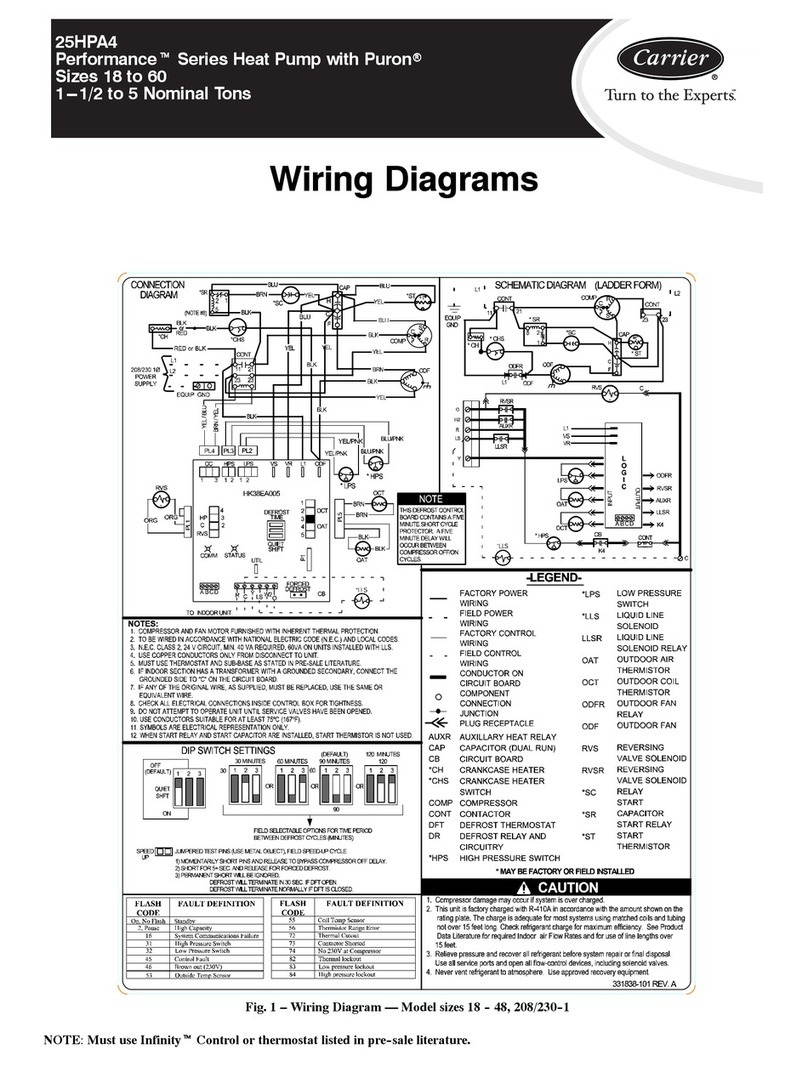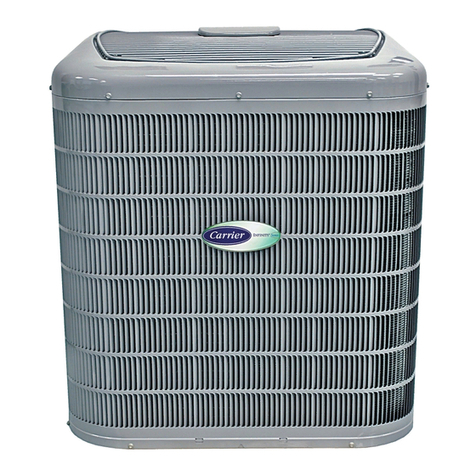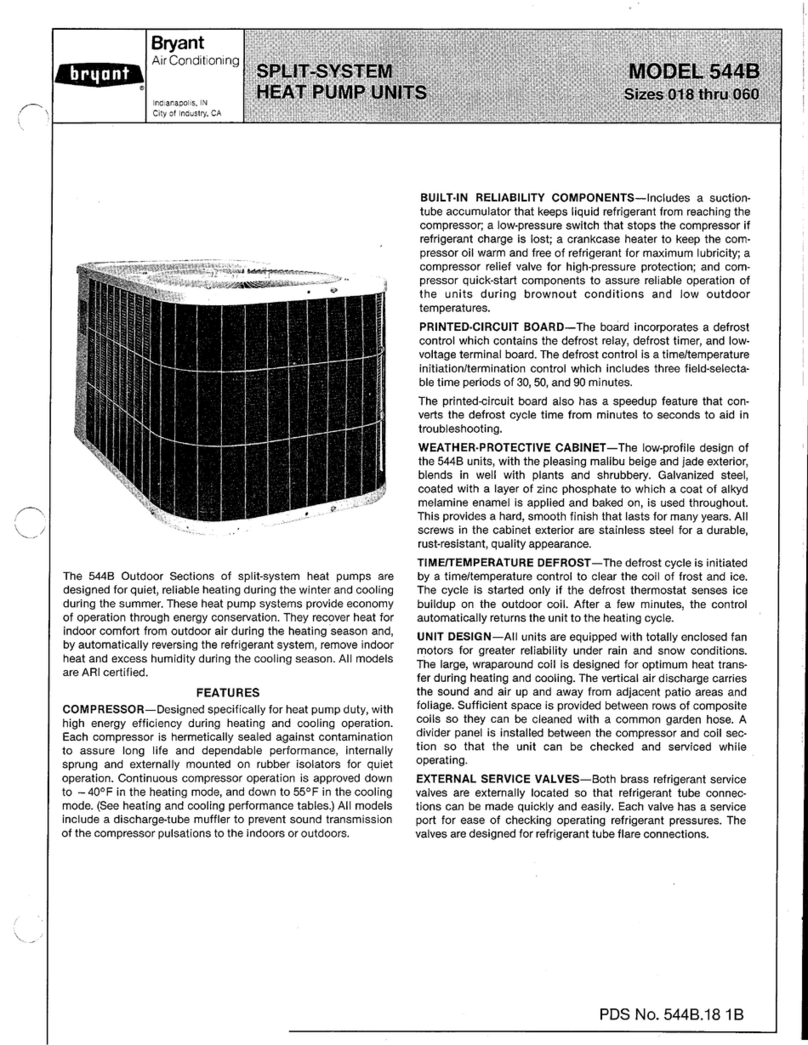
Follow all salcty codes. Wear salety glasses and work gloves. Use
quenching cloth lk_r unbrazing operations. Have fire extinguisher
available lbr all brazing operations.
Belore perlkmning service or maintenance operations on
system, turn off main power to unit and install lockout tag.
Turn off accessory heater power switch if applicable. Elec-
trical shock can cause serious injury or death.
Recognize salety inlormation. This is tile salcty-alert symbol ,/_ .
Whelk yon see this symbol in instructions or manuals, be alert to
the potential lot personal injury.
Understand the signal words DANGER, WARNING, CAUTION,
and NOTE. These words are used with the salDty-alert symbol.
DANGER identifies the most serious hazards wlaich will result in
severe personal injury or death. WARNING signifies a hazard
which could result ilkpersonal injury or death. CAUTION is used
to identify unsaid practices which would result in minor personal
injury or product and property damage. NOTE is used to highlight
suggestions which will result in enhanced installation, reliability,
or operation.
These instructions cover mininmm requirements and conl()rnl to
existing national standards and salbty codes. In some instances,
these instructions exceed certain local codes and ordinances,
especially those that may not have kept up with changing residen-
tial construction practices. We require these instructions as a
minimum lbr a said installation.
INTRODUCTION
50ZH heat pump units are fully sell'contained and designed lbr
outdoor installation (See Fig. 1). As shown in Fig. 2-4, units are
shipped in a horizontal-discharge configuration lot installation on
a ground-level slab. All units can be field-converted to downflow
discharge configurations lot rooftop applications with a field-
supplied plenum.
RECEIVING AND INSTALLATION
Step 1--Check Equipment
IDENTIFY UNIT
The unit model number and serial number arc stamped on the unit
identification plate. Check this inlornmtion against shipping pa-
pers. Verify that unit voltage and amperage listed on unit rating
plate agree with power supplied Ibr equipment.
INSPECT SHIPMENT
Inspect Ibr shipping damage while unit is still on shipping pallet.
If unit appears to be damaged or is torn loose from its securing
points, have it exandned by transportation inspectors belkwe
removal. Forward claim papers directly to transportation company.
Manufacturer is not responsible lk)rany damage incurred ilktransit.
Check all items against shipping list. Immediately notify the
nearest Carrier Air Conditioning office il' any item is missing.
To prevent loss or damage, leave all parts ilk original packages
until installation.
Step 2--Provide Unit Support
SLAB MOUNT
Place the unit on a rigid, level surl'ace_ suitable to support the unit
weight. A concrete pad or a suitable fiberglass mounting pad is
recommended. The fiat surface should extend approximately 2-in.
beyond the unit casing on the 2 sides. The duct connection side and
condensate drain connection sides should be flush with the edge of
the flat surface.
A 6-in. wide gravel apron should be used around the flat sl.n'face to
prevent airlIow blockage by grass or shrubs. Do not secure the unit
to the flat snrlace except where required by local codes.
The unit should be level to within 1/4 inch. This is necessary lot
the unit drain to lunction properly.
GROUND MOUNT
The unit may also be installed directly on the ground if local codes
permit. Place unit on level ground prepared with gravel lor
condensate discharge.
Step 3--Provide Clearances
The required minimum service clearances and clearances to
combustibles are shown in Fig. 2-4. Adequate ventilation and
outdoor coil air must be provided.
The outdoor fan pulls air through the outdoor coil and discharges
it through the fan on the top cover. Be sure that the fan discharge
does not recirculate to the outdoor coil. Do not locate the unit in
either a corner or under an overhead obstruction. The minimum
clearance under a partial overhang (such as a normal house
overhang) is 48 in. above the unit top. The maxinmm horizontal
extension of a partial overhang nmst not exceed 48 inches.
Do not place the unit where water, ice, or snow fi'om an overhang
or roof will damage or flood the unit. The unit may be installed on
wood flooring or on Class A, B, or C roof covering materials.
Do not restrict outdoor coil airflow. An air restriction at either
the outdoor-air inlet or the fan discharge can be harmful to
compressor lilt.
Step 4--Place Unit
Unit can be moved with the rigging holds provided in the unit base.
Relcr to Table 1 Ik_roperating weights. U.se extreme caution to
pre_ent damage when movillg the unit. Unit must remain in an
upright position durit_g all moving operatiot_s. The unit must be
level with in 1/4" 12_rproper condensate drainage; the ground-level
pad nmst be level belbre setting the unit in place. When a
field-fabricated support is used, be sure that the support is level
and that it properly supports the unit.
Step 5--Select and Install Duetwork
The design and installation of the duct system must be in
accordance with:
*the standards of the NFPA (National Fire Protection Associa-
tion) lbr installation of nonresidence-type air conditioning and
ventilating systems
* NFPA90A or residence-type, NFPA90B; and/or local codes
and residence-type, NFPA 90B
* and/or local codes and ordinances
Select and size ductwork, supply-air registers and return-air grilles
according to ASHRAE (American Society o1' Heating, Refrigera-
tion, and Air Conditioning Engineers) recommendations.
Use the duct flanges provided on the supply- and return-air
openings on the side of the unit. See Fig. 2-4 lot connection sizes
and locations. The 14-in. round duct collars (size 030-048 units)
are shipped inside the unit attached to the indoor blower. They are
field-installed and nmst be removed l'rom the indoor cavity prior to
start-up, even if they are not used lbr installation.
INSTALL FLANGES FOR DUCTWORK CONNECTIONS
(50ZH060 ONLY)
The 50ZH060 units are shipped with flanges which nlust be
field-installed on the unit.
To install unit fhmges:

